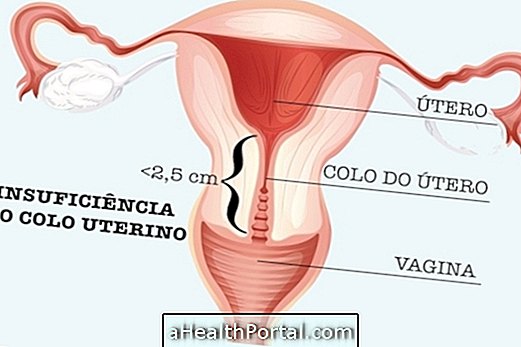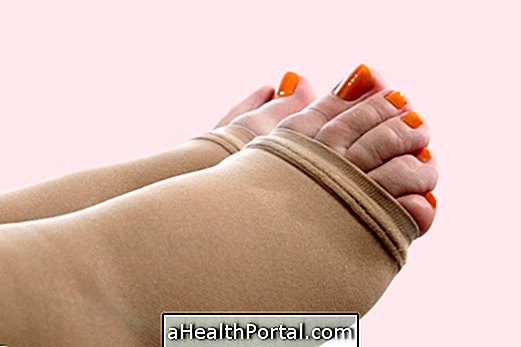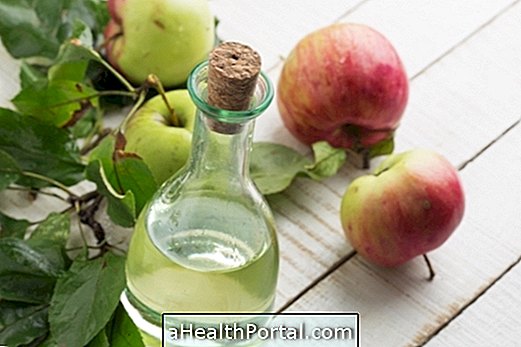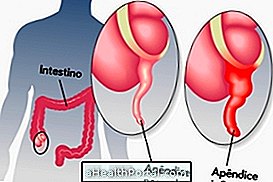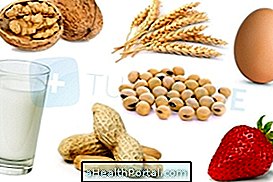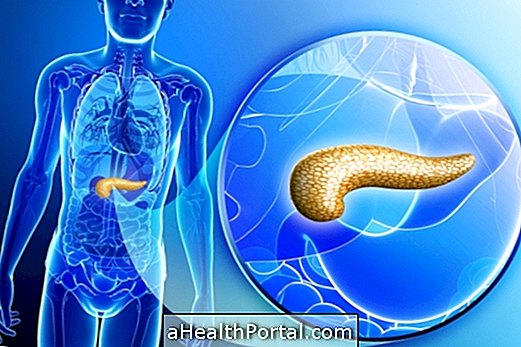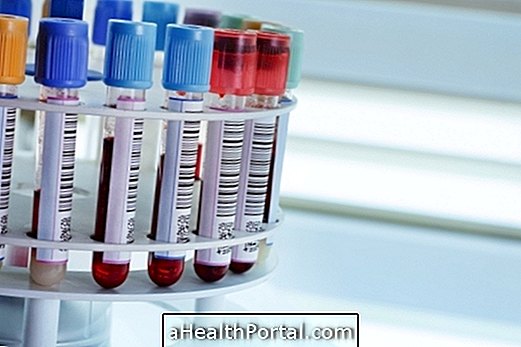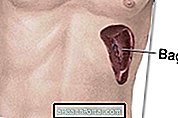Yellow diarrhea usually occurs when stool passes very quickly through the intestine and, therefore, the body can not properly absorb the fats, which end up being eliminated in the feces with yellowish coloration.
Most of the time, this problem only lasts 1 or 2 days and is caused by situations of high stress or anxiety, but when kept longer it can be a sign of changes in gastrointestinal health such as irritable bowel, intestinal infection or even pancreatic problems or gallbladder, and it is recommended to consult a gastroenterologist.
During any period of diarrhea it is important to increase water intake in order to avoid dehydration caused by the loss of water in the stool as well as make a lighter diet to avoid overloading the intestine. Check out a dietary suggestion for diarrhea.

1. Anxiety or stress
Anxiety and stress are the main cause of diarrhea because they cause an increase in bowel movements, making it difficult to absorb nutrients and water, resulting in soft or liquid stools. Here are 7 simple tips to control anxiety.
In addition, anxiety situations usually send blood to the legs, decreasing their concentration in the gastro intestinal tract, making digestion difficult and allowing the passage of fats that make stool yellow. Thus, it is common that during periods of much stress and anxiety, such as delivery of important papers or presentations, yellow diarrhea develops, but usually improves in 1 or 2 days.
2. Irritable bowel syndrome
The irritable bowel is also one of the most frequent causes of diarrhea, and although it does not always cause yellowish stools, in some people it can impair the absorption of fats in the intestine, which ends up giving a yellowish color.
Other common symptoms of this problem include abdominal pain, excess gas and alternation with periods of constipation. Normally, the irritable bowel is treated with dietary changes, such as avoiding dark leafy vegetables, avoiding alcohol and coffee. Take our online test to see if you can have irritable bowel syndrome:
- 1. Frequent abdominal pain or cramping Yes No
- 2. Feeling of swollen belly Yes No
- 3. Excessive production of intestinal gases Yes No
- 4. Periods of diarrhea, intercut with constipation Yes No
- 5. Increased number of bowel movements per day Yes No
- 6. Feces with gelatinous secretion Yes No

And check how you should treat it properly to avoid the onset of diarrhea.
3. Decrease in bile
Bile is a very important substance for digestion as it helps to break down fat from food, making it easier to absorb into the intestine. Thus, when the amount of bile is decreased, it is common for fat to be eliminated in the stool, making the stool more liquid and yellowish in color.
In addition, because it is the digested bile that gives the brown color to the normal stool, it is even more common that the diarrhea in these cases is very yellow, due to the lack of bile pigments. Some of the problems that can cause lack of bile include gallstones or liver changes such as inflammation, cirrhosis or even cancer. See 11 common signs of liver problems.
When diarrhea is caused by a lack of bile, other symptoms such as darkening of the urine, tiredness, weight loss, and low fever, for example, may still appear.
4. Problems in the pancreas
When the pancreas is not functioning properly, due to inflammation caused by problems such as tumor, cystic fibrosis or a blockage in the organ canal, it can not produce enough pancreatic juice for digestion, which makes it difficult to break down fats and other nutrients . When this happens, yellow diarrhea is normal.
In these cases, in addition to diarrhea, other signs may also appear such as a very full belly sensation after eating, excessive gas, frequent craving and weight loss. Thus, when there are suspected changes in the pancreas, one should go quickly to the gastroenterologist to make an ultrasound and initiate the appropriate treatment. Cancer cases are the most serious because they are usually identified very late, making treatment difficult. See the top 10 signs of this cancer.
5. Intestinal infection
Intestinal infection caused by ingestion of raw foods or contaminated water causes an inflammation of the lining of the intestine that hinders the absorption of water, fat and other nutrients, resulting in yellowish diarrhea.
In cases of infection it is common to appear other symptoms such as frequent vomiting, headache, loss of appetite and fever. Usually, this type of infection can be treated at home with rest, water intake and a light diet. Learn more about how to treat intestinal infection.

What can be yellow diarrhea in the baby
Soft, even liquid stools in the baby are normal, especially in the first 6 months, when most babies are fed exclusively on milk, which contains plenty of water. However, the non-stool amount should not come out of the diaper, because when this happens it is a sign of diarrhea and should be reported to the pediatrician.
In addition, the yellow coloring is also very common because the baby's intestines work much faster than the adult, making it difficult to absorb some fats, especially when the baby is fed breast milk that has a high amount of fat.
Generally, stools should only be of concern when they have more than one diaper or are pink, red, white or black, as they can indicate problems such as infections or bleeding. It is important to go to the hospital quickly or inform the pediatrician so that the best treatment can be started.
Learn more about baby stools and what they mean.








